


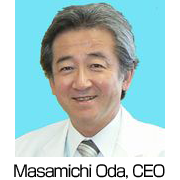
Thank you for coming to learn more about our hospital. Our fundamental principle is: Give Hope to People in Need of Medical Care. To meet demand and fulfill our role, we provide 24-hour services, available whenever people need them. In addition to normally expected services, we have constructed original systems that encompass nursing care, preventative care, and social welfare. We hope this coordinated system will help patients effectively seek and receive medical care and maintain their health and fitness in their respective communities. On this site you can learn more about our operations. I hope you find our services useful.
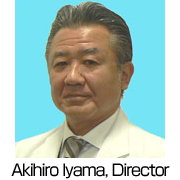
Our hospital has over 100 years of history in Kashima, and patients’ needs have changed over time. In the last three decades, we have organized a system for acute care. Meanwhile, the numbers of patients who are frail and/or have dementia have been increasing in recent years within the country’s so-called super-aging society. We therefore, more than ever, need to provide medical care in which we both treat illness and support the patient’s life. To meet such demand, we continue to develop a new home-care system that helps reduce patients’ anxiety when they leave the hospital, and lets them continue their medical care as when they were in the hospital. We hope such systems will contribute to improved quality of life for our patients.
General Internal Medicine / Hematology / Diabetes and Endocrinology / Gastroenterology / Gastrointestinal Surgery / Hepatobiliary Pancreatology / Neurosurgery / Respiratory Medicine / Thoracic Surgery / Cardiology / Dermatology / Breast Surgery / Otolaryngology / Plastic Surgery / Radiology / Rehabilitation / Emergency / Anesthesiology
We follow four policies that seek to enable patients to spend the rest of their lives in their communities.
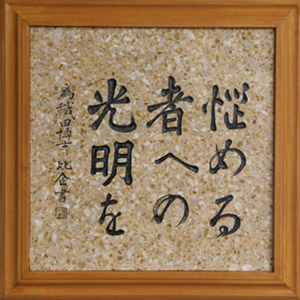
We provide medical care for prevention and treatment of lifestyle-related illnesses and concerns to help people stay fit and healthy through their lives. Patients may undergo examinations including special checks for the brain, lungs, and mammary glands. They may also take part in our walking programs and cooking lessons, which benefit their everyday lives.
We address illness with the objectives of seeking to cure it and of supporting patients’ lives in their treatment. We provide acute medical care and advanced treatment within our roles as an acute medical institute. We also assemble systems that enable patients to continue their care at home after leaving the hospital.
We develop home-care medical systems in which nurses or helpers routinely visit the patient’s home as often as necessary and can address urgent issues at any time of day. To continue improving our systems, we have begun to use the Internet of Things, and work in cooperation with a map company and security company.
We welcome non-Japanese nurses or helpers, and encourage them to use their experience in our hospital toward passing national examinations.
Nobunaga Oda was a famous military commander in 16th-century Japan. His nephew, Toshinaga Oda, came here to accompany Princess Kazan-in Manko who would marry Lord Naotomo Nabeshima (Nabeshima being the previous name of Kashima). Some of his descendants became doctors and worked for the lords across the generations.
Incidentally, “Incidentally, the princess ordered Yutoku Inari Shrine, the most famous shrine in Saga Prefecture, to be built to honor the God of the imperial court in Kyoto. This beautiful shrine with vermillion scaffolding is one of the most popular tourist attractions in Saga.
Roughly a century ago, one of the descendants opened the Oda Hospital, from which time the hospital has provided medical care focused on the residents of Kashima.
An exhibition room in the hospital presents an engaging display of old medical publications providing, for example, treatment for sword wounds, as well as anatomical studies from long ago.
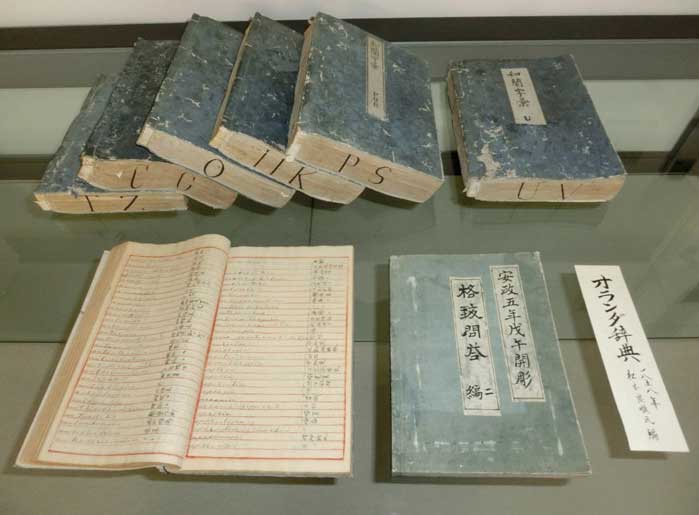
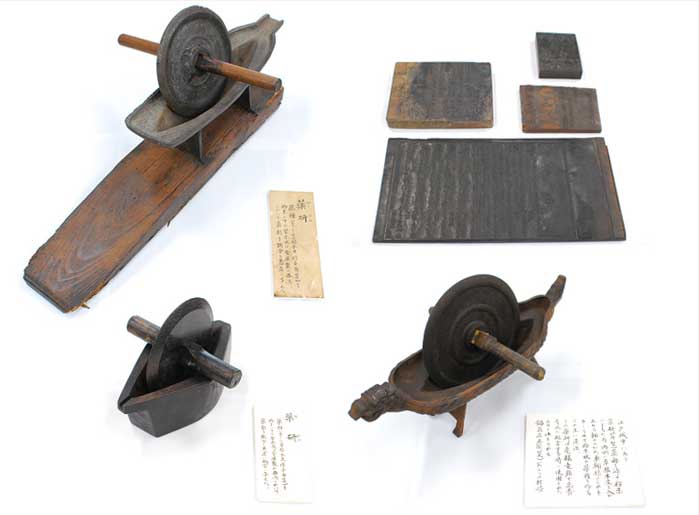
Take the subway from Fukuoka Airport to Hakata Station (6 minutes).
At Hakata, change to the JR Nagasaki Express Line to Hizen-Kashima Station (about 1 hour).
Take a taxi (2 minutes) or walk (5 minutes).
The hospital is about a 30-minute drive from the Takeo Interchange (I.C.) on the Nagasaki Highway.
In preparation for the coming of the super-aging society, our hospital has developed our own medical systems over and over again.
The motto shared today among our hospital staff is “Combatting a patient’s disease is not enough without helping boost the overall quality of his/her life”. Our imminent mission is to build in our hospital another new system fit best to this motto.So far, we’ve opened Medical Base Camp (MBC), which is the brand-new medical care system our patients can rely on even after they leave our hospital. The “Base Camp” refers to each section in our visiting nursing care unit or in the group of our physical therapists, care workers, or medical social workers. In this system, our neighboring areas can be directly linked to each of our hospital wards, and each patient’s house is directly connected to our sickroom bed. Through this particular service, patients can gain much easier access to our subacute care in their own houses. Accordingly, their personal worries after leaving our hospital can be further eased.
Now, there are about four thousand households in the target area for this new system, which is located within two kilometers of our hospital. Only long-term-care insurance (or health insurance) holders (aged seventy-five or older) can benefit from this system.
We hope that our MBC will be an effective role model for the future improvement of Japan’s aging-related community medicine.
One of our hospital’s recent developments for supporting the home medical care in our neighboring areas is a new surveillance network equipped with IoT (“Internet of Things”). In this network, whenever our patients feel out of shape at home or, say, they get too numb to stand up due to falling from their beds, they can directly communicate at regular intervals with our hospital staff through their own tablets, without leaving their houses at all. Moreover, the heart rate of our each patient can be regularly and accurately checked in their houses by a special wristwatch-like apparatus we offer them each (this apparatus can be even used as a nurse- call button for them).
We are now confident that this network system can efficiently support our patients’ daily lives in the most comfortable space for them, that is, their own home.